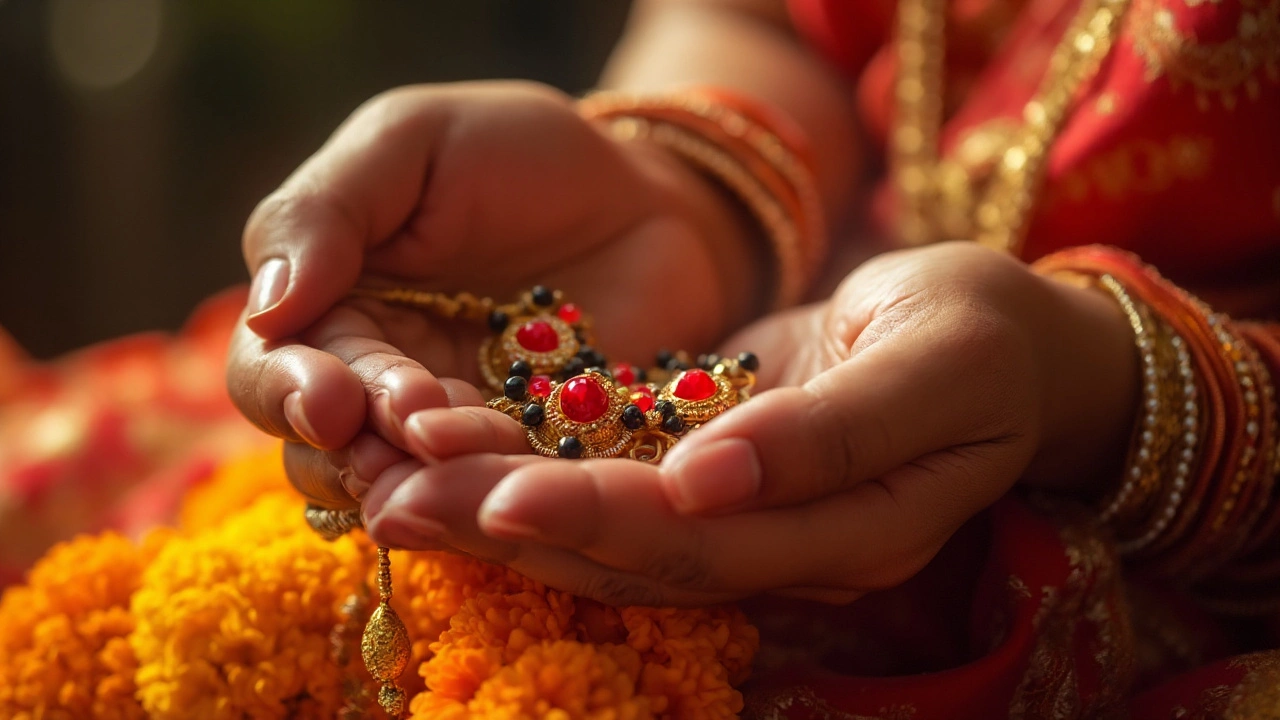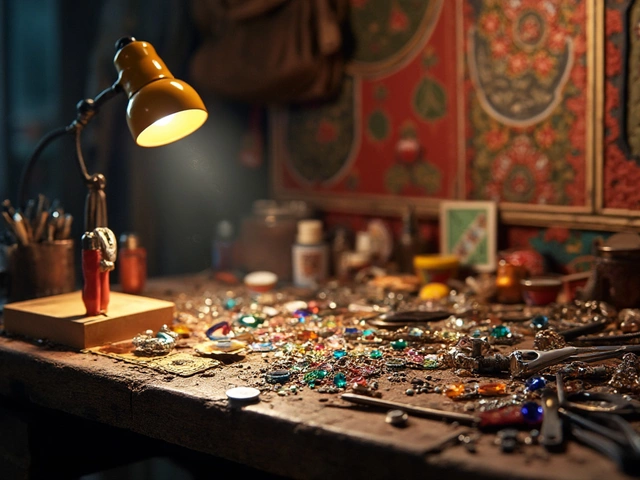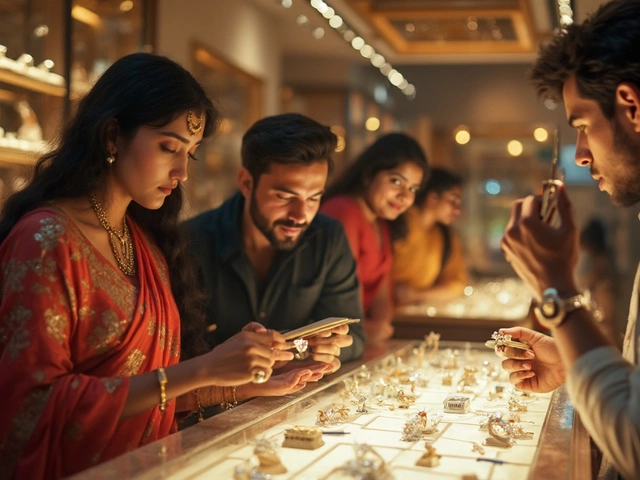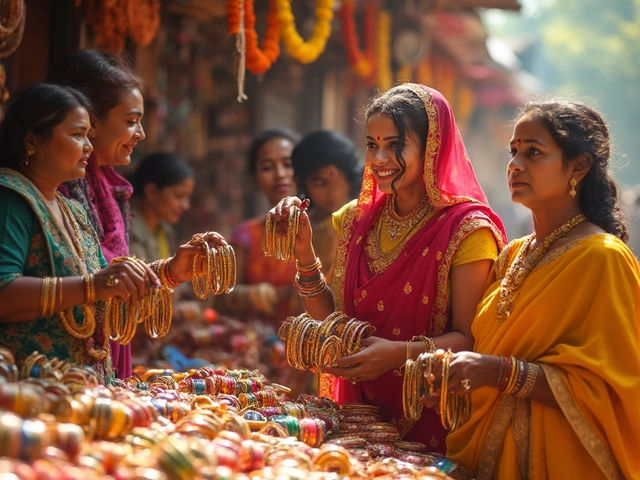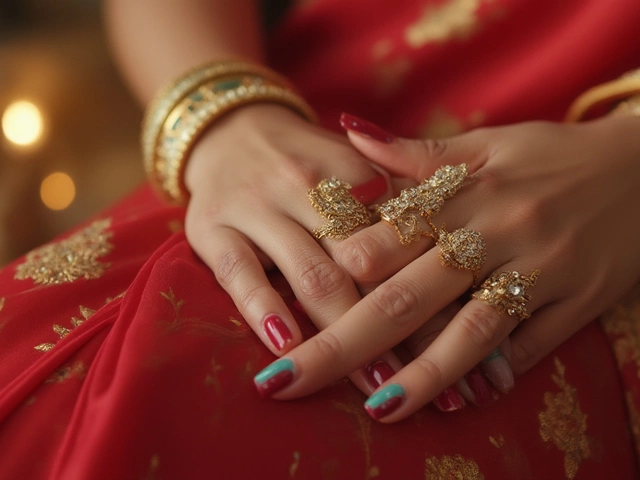What Makes Indian Jewelry So Significant?
When you pick up a piece of Indian jewelry, you’re not just choosing an accessory. You’re holding a story, a belief, and a slice of history. From a gold mangalsutra that signals marriage to a black bangle that wards off bad vibes, each item carries a purpose beyond its sparkle.
Understanding the meaning behind these pieces helps you wear them with confidence. It also makes shopping easier because you know exactly what you’re looking for – whether it’s a symbol of love, a protective charm, or just a style statement.
Common Symbolic Pieces and Their Meanings
Mangalsutra – This gold or diamond‑studded necklace is a marital talisman. The black beads inside the chain are believed to keep negativity away, while the gold links represent the bond between partners.
Black Bangles – Many wear them to protect against the evil eye. The colour black is thought to absorb negative energy, making the wearer feel safer during festivals or everyday life.
Nose Studs – In many Indian families, a small nose pin marks a woman’s entry into adulthood. Different regions use different shapes, but the pin often symbolizes femininity and cultural identity.
Gemstone Rings – Each gem carries its own vibe. For example, a ruby is linked to passion and courage, while a sapphire is said to bring calm and wisdom. Knowing the lore helps you pick a stone that matches your goals.
Why the Significance Matters When You Shop
Knowing the story behind a piece prevents you from buying something that feels empty. If a friend recommends a "833" silver ring, you’ll know that the stamp means the piece is 83.3% pure silver – a detail that affects both value and durability.
Understanding hallmarks like "875" on gold tells you the metal is 21‑karat, which is common in Indian markets. This knowledge protects you from cheap imitations and lets you compare prices confidently.
When you shop online at RH Jewellers, each product page lists the material, hallmark, and cultural background. That way, you can see at a glance whether a pendant fits your wedding tradition or if a set of bangles aligns with your festive wardrobe.
Beyond cultural reasons, significance also ties into value. Pieces that hold meaning, such as antique gold necklaces or vintage diamond sets, often keep or even increase their worth over time. Knowing which items are considered investment‑grade can guide you toward smarter purchases.
So, the next time you scroll through a collection, ask yourself: What story does this piece tell? Does it match my personal style, my family’s customs, or my investment goals? When the answer is yes, you’ve found a truly significant piece.
Remember, jewelry is a personal language. The more you understand its symbols, the louder your style will speak.
Why Are Black Beads Essential in Mangalsutra? Meaning, Myths & Modern Trends
Explore the deeper meaning, origins, and ongoing importance of black beads in mangalsutra. Uncover myths, cultural facts, and design insights packed into one guide.
The Kirpan: History and Significance in Sikhism
The Kirpan is more than just a ceremonial sword for Sikhs; it's a profound symbol of spirituality, courage, and dignity. Explore its rich history from its origins in Guru Gobind Singh's time to its role in modern Sikh identity. Discover why Sikhs wear the Kirpan daily and how it represents their values of justice and protection. Learn the legal aspects and cultural significance of this sacred emblem.
Kirpan: Meaning and Significance Explained
The Kirpan is more than just a ceremonial dagger; it's a vital symbol in Sikhism. It represents courage and the commitment to fight against injustice. Observant Sikhs carry it as a reminder of their duty to defend the vulnerable. This article explores the cultural, religious, and historical significance of the Kirpan, providing insights into its meaning and place in modern-day Sikh practice.
